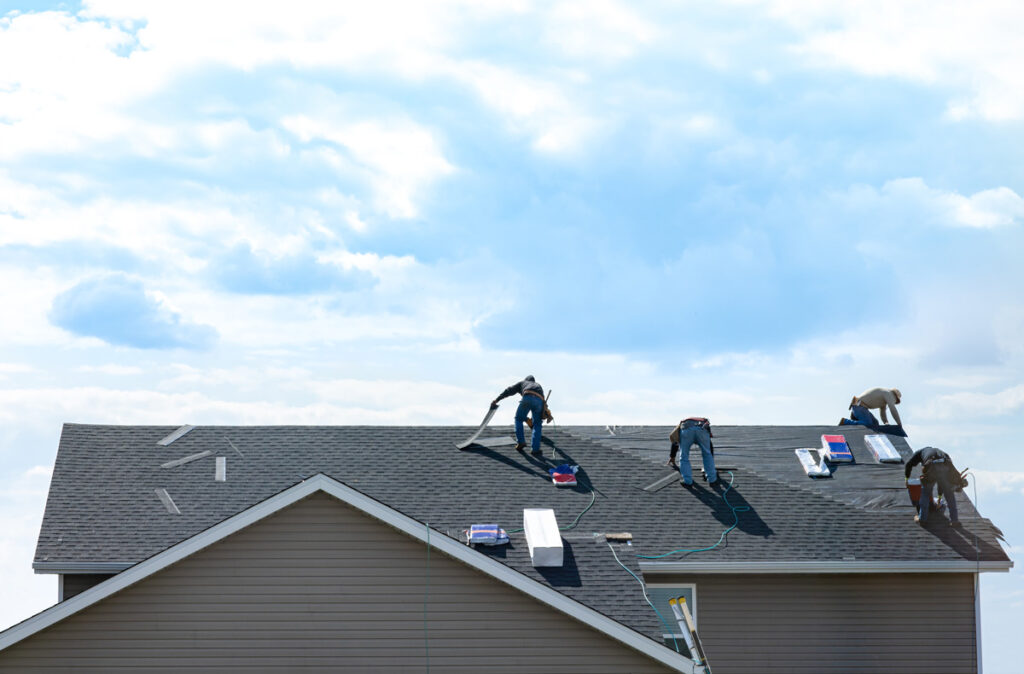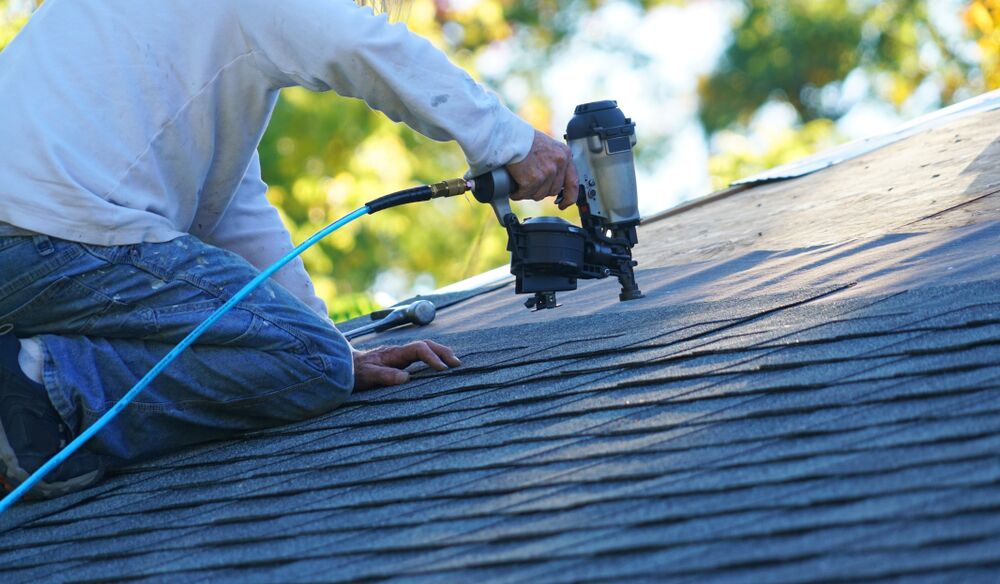Exploring the Numerous Kinds Of Roofing Systems: Which One Is Ideal for Your Home?
When considering the myriad types of roofing systems offered, it is vital to assess exactly how each option straightens with your home's special demands, consisting of climate problems, visual preferences, and structural capability. From the timeless gable roofing system that efficiently channels rain to the modern flat roof covering offering urban adaptability, each design provides distinct advantages and difficulties.
Saddleback Roof
Saddleback roofs, characterized by their triangular shape and sloping sides, are a prominent choice amongst homeowners looking for both visual allure and performance. This roofing design effectively permits efficient water runoff, minimizing the risk of water merging and subsequent damages. Furthermore, the high slopes create enough attic room area, which can be made use of for storage or perhaps exchanged living locations.
Among the key benefits of saddleback roofs is their capacity to stand up to harsh weather. The style assists in minimizing wind resistance, making them especially ideal for areas susceptible to tornados. Additionally, saddleback roofs can be created using a variety of products, consisting of roof shingles, tiles, and metal, supplying home owners with flexibility in layout and spending plan.
From an architectural point of view, gable roof coverings can boost the aesthetic allure of a home, offering a ageless and traditional appearance. They can enhance various building designs, from standard to modern-day styles. However, it is necessary to take into consideration possible drawbacks, such as the sensitivity to snow build-up in colder environments. Generally, saddleback roofs continue to be a preferred choice because of their balance of usefulness and style, interesting a large range of house owners.
Apartment Roofs
While often neglected for even more standard roofing styles, flat roof coverings use special benefits that deal with particular building needs and modern layout choices. These roofings are defined by their marginal pitch, permitting efficient usage of space, especially in metropolitan environments where taking full advantage of square video footage is essential.
One substantial benefit of level roofings is their convenience. They can be used as added living rooms, such as roof gardens, outdoor patios, or photovoltaic panel installations, enhancing the performance of a home. Moreover, level roofings are commonly less complicated and much safer to navigate during maintenance, facilitating fixings and inspections without the challenges presented by steep slopes.
Level roofing systems can also be much more affordable in regards to products and setup. With a simpler design, they often call for fewer resources, translating right into lower labor costs. Nonetheless, it's important to consider drain and waterproofing, as level roofs can be susceptible to merging water if not adequately developed.

Hip Roofings
Hip roofings stand out for their elegant design and architectural honesty, making them a prominent option among home owners. Characterized by inclines on all 4 sides, hip roofing systems offer a well-balanced visual that enhances different building designs - roof repair oahu. The in proportion nature of these roofs helps to distribute weight evenly, improving security and toughness
Among the essential advantages of hip roofings is their capacity to stand up to harsh weather. The sloped surfaces promote effective water drainage and snow runoff, minimizing the risk of leakages and structural damages. Additionally, the design decreases wind resistance, making hip roofs less vulnerable to wind uplift compared to various other roof kinds.


Lost Roofing Systems
Dropped roofs, as opposed to the complexity of hip roofs, use a minimal and structured layout that charms to modern visual appeals. Characterized by a single sloping surface, dropped roofing systems are often made use of in contemporary style, yard sheds, and various other practical structures. This simplicity not just improves visual appeal yet likewise permits efficient water runoff, making them suitable for various climates.
Among the primary benefits of shed roofs is their cost-effectiveness. With less materials required and a simple installment process, home owners can save both time and cash. The style also allows the unification of huge windows or skylights, advertising natural light and producing roomy interiors.
However, it is essential to consider the potential disadvantages, consisting of restricted insulation choices and the demand for mindful design to avoid extreme warmth accumulation. In addition, lost roofing systems might not blend seamlessly with typical design, which might be a problem for some property owners.
Ultimately, lost roof coverings provide a functional and stylish roof covering service for those looking for modernity and efficiency. When choosing a roofing system type, reviewing personal functional requirements and visual choices will certainly lead property owners to the finest option for their special requirements.
Mansard Roofings
Mansard roof coverings, defined by their distinctive four-sided style, are a trademark of French design that incorporates beauty with functionality. This architectural design includes 2 slopes on each side, with the reduced slope being steeper than the upper one. The one-of-a-kind arrangement click here to find out more enables additional space in the top levels, making it an ideal choice for homeowners seeking to take full advantage of functional area without expanding the building's footprint.
One of official source the considerable advantages of a mansard roofing system is its adaptability. It can be adapted to different architectural styles, from conventional to modern-day, enhancing the aesthetic appeal of any type of home. Furthermore, the sufficient area created under the roofing can conveniently suit dormer windows, which enable all-natural light and ventilation, further enhancing the comfort of the living location.
However, possible homeowners should take into consideration the maintenance requirements connected with mansard roofing systems. The steep inclines can lead to boosted wear from weather direct exposure, demanding normal maintenances. Additionally, setup expenses may be greater compared to simpler roof covering styles as a result of the complexity of building. Ultimately, a mansard roof can be an outstanding option for those prioritizing design and room.
Verdict
In verdict, the choice of an appropriate roof type rests on specific needs, environment factors to consider, and visual preferences. Each roof covering design offers unique benefits, such as the efficiency of gable roofing systems, the contemporary appeal of shed roofs, and the security of hip roofings. In addition, flat roofing systems provide usefulness for urban atmospheres, while mansard roofings supply extra home in spite of greater setup costs. Inevitably, a comprehensive analysis of these factors will certainly assist homeowners in making a notified decision.
From the traditional gable roof that successfully channels rainwater to the contemporary flat roofing system offering city adaptability, each design offers distinctive advantages and difficulties (roof repair oahu). Additionally, the design minimizes wind resistance, making hip roofs less vulnerable to wind uplift contrasted to various other roof types
Lost roof coverings, in comparison to the complexity of hip roofings, provide a minimal and streamlined design that allures to modern-day appearances. Each roof covering design offers unique hop over to these guys advantages, such as the efficiency of gable roofings, the modern charm of shed roofing systems, and the stability of hip roof coverings. Flat roofing systems provide functionality for city settings, while mansard roofs supply added living room despite higher installation expenses.